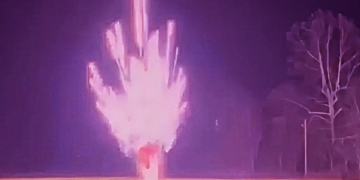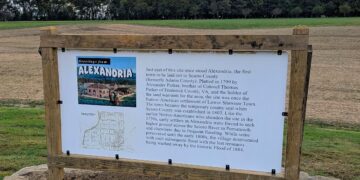Southeast Ohio is home to a variety of wildlife, including some poisonous snakes. While a whole lot of us have stories involving a gardening mammaw taking out a copperhead with a hoe, the chances of encountering these snakes are relatively low. However, it’s important to know how to identify them to ensure safety during outdoor activities. Scioto County is usually home to two types of poisonous snakes, but there’s a third variety that can be found in wetlands – Eastern Copperhead, the Timber Rattlesnake, and the Northern Cottonmouth. Here’s how to identify them:
1. Eastern Copperhead (Agkistrodon contortrix)

The Eastern Copperhead is the most common venomous snake in Southeast Ohio. Recognizing this snake can help prevent unwanted encounters.
- Color and Pattern: Copperheads have a distinctive coppery-tan color with hourglass-shaped bands of darker brown across their bodies. These bands are wider on the sides and narrower along the spine, creating a pattern that resembles a cross-section of an hourglass.
- Head Shape: They have a broad, triangular head distinct from their neck, which is typical of many venomous snakes.
- Eyes: Copperheads have elliptical (cat-like) pupils.
- Size: Adults typically range from 2 to 3 feet in length.
2. Timber Rattlesnake (Crotalus horridus)

The Timber Rattlesnake is another venomous species found in the forests of Southeast Ohio. This snake is less commonly encountered due to its more reclusive nature.
- Color and Pattern: Timber rattlesnakes exhibit a background color that can range from yellow to brown or gray, with dark brown or black V-shaped crossbands along their bodies. There is often a rust-colored stripe running down the center of their back.
- Head Shape: They also have a broad, triangular head.
- Rattle: A key identifier is the rattle at the end of their tail, which they use as a warning signal when threatened.
- Size: These snakes can grow larger than copperheads, often reaching lengths of 3 to 5 feet.
3. Northern Cottonmouth (Agkistrodon piscivorus)

Although less common in Southeast Ohio, the Northern Cottonmouth can still be found in certain wetland areas. Also known as water moccasins, these snakes prefer aquatic environments.
- Color and Pattern: Cottonmouths have a dark, thick body that can range from olive to almost black, often with faint, darker crossbands that can be difficult to see. Juveniles are lighter in color with more distinct patterns.
- Head Shape: Like other venomous snakes, they have a triangular head.
- Mouth: They get their name from the white, cotton-like interior of their mouths, which they display when threatened.
- Size: Cottonmouths typically range from 2.5 to 4 feet in length.
General Safety Tips
While knowing how to identify these snakes is important, here are some general tips to stay safe:
- Stay on Trails: Stick to well-trodden paths when hiking or walking in snake-prone areas.
- Watch Your Step: Be cautious when stepping over logs or rocks where snakes may be hiding.
- Do Not Disturb: If you encounter a snake, do not attempt to handle or provoke it. Give it space to move away.
- Wear Protective Clothing: Wear long pants and boots when hiking in areas known for venomous snakes.
- Have a Mammaw with a Garden Hoe on standby: Mammaws can spot copperheads a mile away and take them out in a flash.
By being aware of these venomous snakes and how to identify them, you can enjoy the natural beauty of Southeast Ohio while staying safe. If bitten by a snake, seek immediate medical attention, as prompt treatment is crucial.
Keywords: Southeast Ohio poisonous snakes





















































































